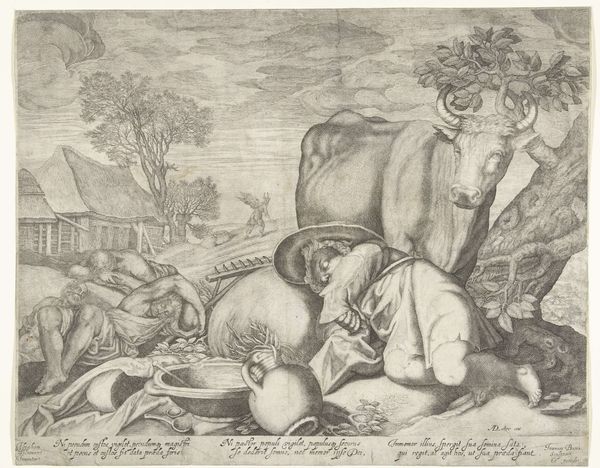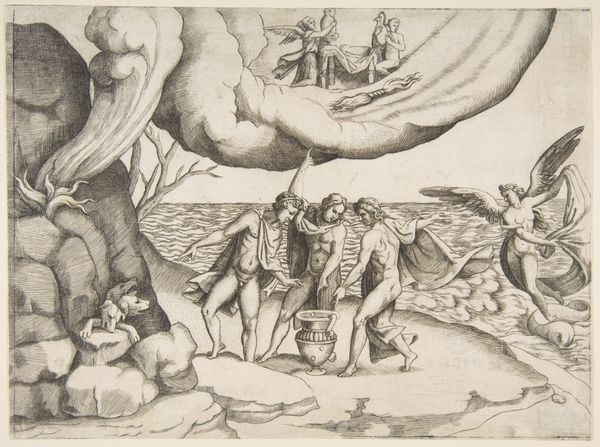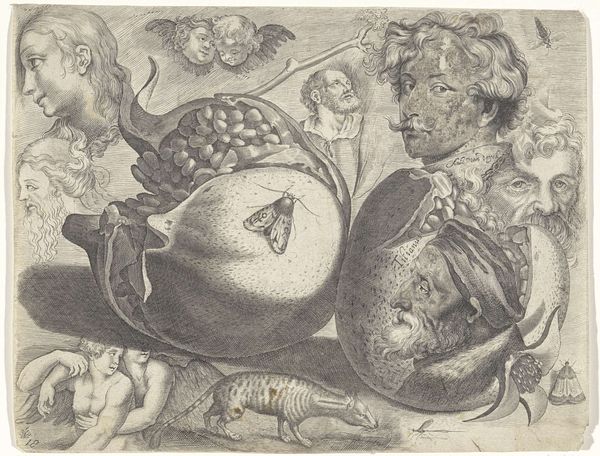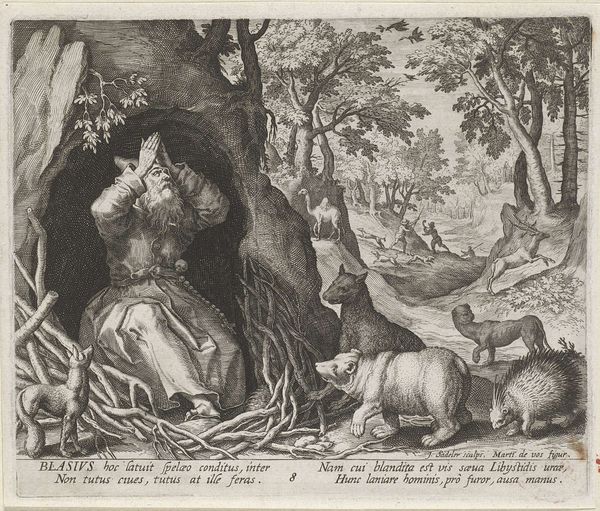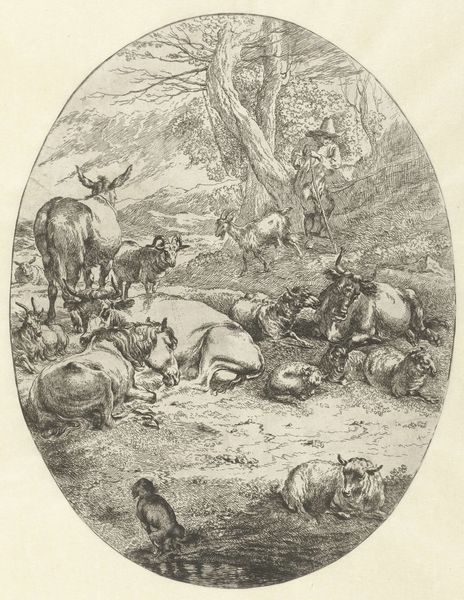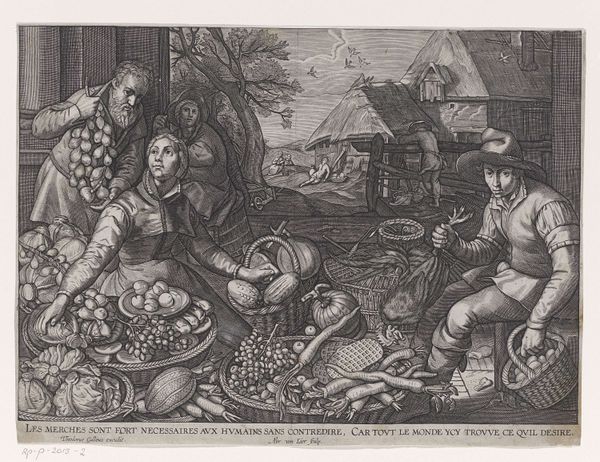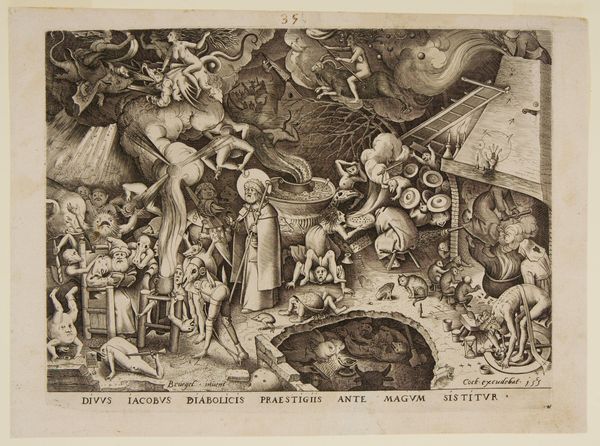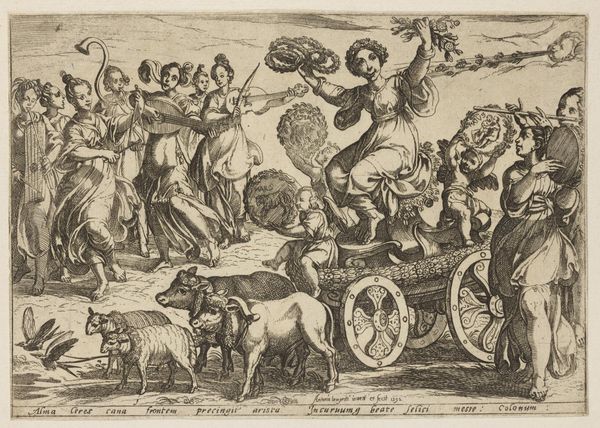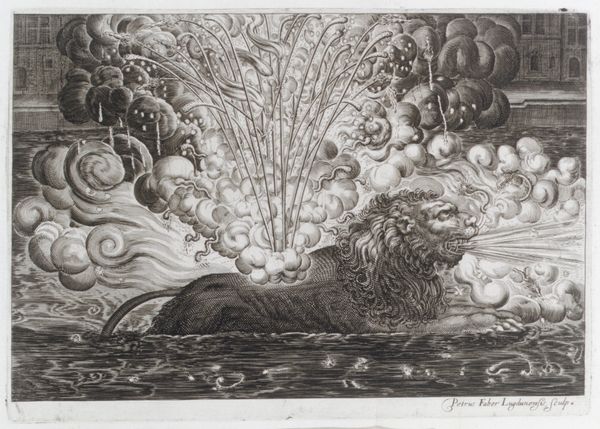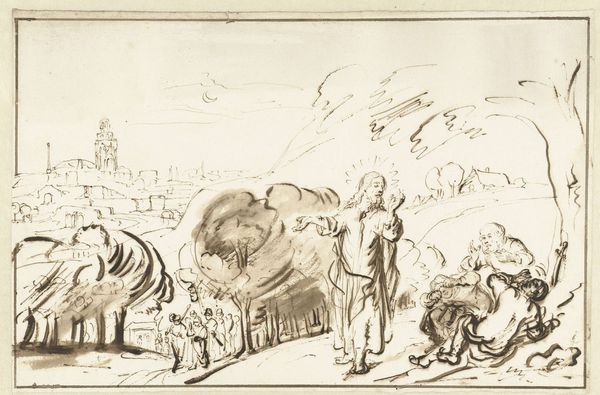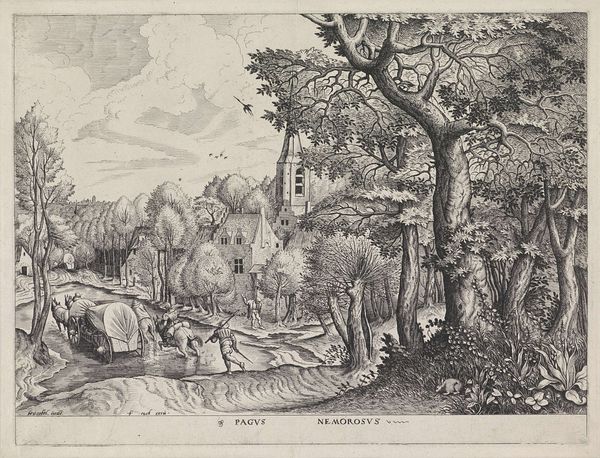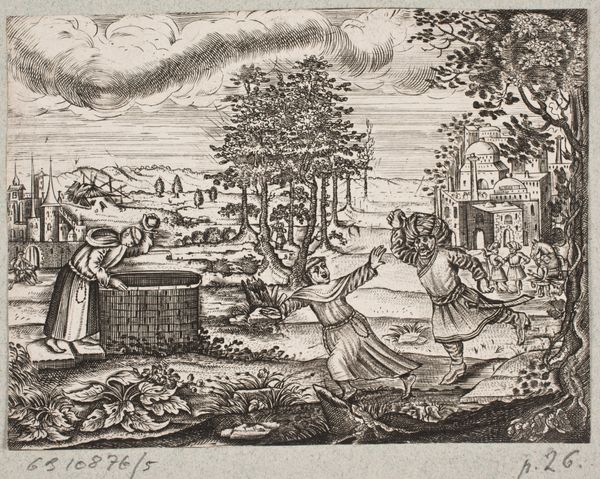
print, etching, engraving
#
baroque
# print
#
pen illustration
#
etching
#
pencil sketch
#
landscape
#
pen-ink sketch
#
pen work
#
portrait drawing
#
genre-painting
#
engraving
#
pencil art
Dimensions: height 327 mm, width 405 mm
Copyright: Rijks Museum: Open Domain
This engraving by Johan Barra, made around the early 17th century, depicts a biblical scene of the parable of the weeds. The dominant symbols are those of the sleeping farmers, the figure of Satan sowing weeds, and the ominous presence of the ox. These symbols echo throughout art history. Sleep, often a metaphor for ignorance or spiritual negligence, allows evil to take root, while the figure of Satan embodies temptation and moral corruption. The ox, traditionally a symbol of strength and sustenance, here looms large, a silent witness to the unfolding corruption. This relates to ancient cults, the deity Apis appears as a sacred bull and a symbol of fertility. The act of sowing weeds carries psychoanalytic weight; it's an act of subversion, an attempt to undermine the good. This subversion recurs throughout time in art, in which the collective anxiety about moral decay is evident. We see it in medieval depictions of the Fall of Man, Renaissance allegories of vice, and modern anxieties about societal corruption. The parable's cyclical progression, with good and evil eternally in conflict, suggests that vigilance and awareness are perpetually required.
Comments
No comments
Be the first to comment and join the conversation on the ultimate creative platform.
